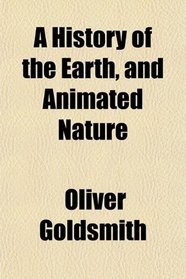Search -
A History of the Earth, and Animated Nature
A History of the Earth and Animated Nature
Author:
Purchase of this book includes free trial access to www.million-books.com where you can read more than a million books for free. This is an OCR edition with typos. Excerpt from book: CHAP. III. Of Hearing. the sense of hearing, as well as of sight, gives us notice of remote objects., so, like that, it is subject to similar errors, being... more »
Author:
Purchase of this book includes free trial access to www.million-books.com where you can read more than a million books for free. This is an OCR edition with typos. Excerpt from book: CHAP. III. Of Hearing. the sense of hearing, as well as of sight, gives us notice of remote objects., so, like that, it is subject to similar errors, being... more »
ISBN-13: 9780217662727
ISBN-10: 0217662722
Publication Date: 8/16/2009
Pages: 248
Rating: ?
ISBN-10: 0217662722
Publication Date: 8/16/2009
Pages: 248
Rating: ?
0 stars, based on 0 rating




